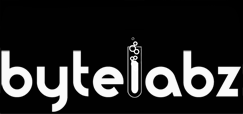Today, there are almost a billion active websites, implying that one in every seven individuals in the world has a website. Interestingly, many websites are created every second, and that is quite important to web service providers. The concern, is that how do they protect them from cyber threats? Registration, design, coding, functioning, and growth are all stages that must be followed to build a secure website. This article outlines the procedures necessary to create a secure website for personal or commercial use.
Selecting a Trustworthy Host
When it comes to building a website, a web developer has a number of hosting alternatives to pick from, each with its own set of advantages that allow them to progress their projects. Most notably, characteristics like WAF (web application firewall) and DDoS security define their level of protection. A web application firewall (WAF) is a vital technology that prevents websites from being hacked or compromised. For example, WAF keeps an eye on the use of SQL –structured query language and cross-site scripting, both of which are infamous for leaking personal information. The loss of data from a website can cost money and effort, but choosing the appropriate hosting company can keep your website safe from cyber-attackers.
Selecting the Most Appropriate Content Management System (CMS)
What kind of website do you want to create? Thanks to CMS technologies, you don’t need to be a coder to put together a fully functional website these days. CMA is a vital tool to use while building a website since it allows you to manage future online content while also enhancing web security, analysing programme code, and managing quick web operations. CMS enables website designers to create, update, run, and maintain web sites all from a single interface. The technology simplifies the design of websites as well as the online publication of information, resulting in a website and its content that are both streamlined.CMS protects the website from vulnerabilities and plugs any security holes that may exist. The system’s developers are constantly updating the technology to make websites more resistant to sophisticated and deadly cyber-attacks. Joomla, Drupal, and WordPress are just a few of the well-known CMS platforms that are recognised for being user-friendly and allowing easy installation adjustments for both web developers and users. Using these CMS technologies, building a website is as simple as putting together a conventional house from the ground up.CMS offers you complete control over the material you publish. Customers are significantly involved in content marketing, and business owners must maintain ongoing control over every material produced on their website. It is feasible to make frequent changes to the CMS tool in order to meet the demands of the clients. The CMS solution has automated indexing capabilities, which allows sites to appear in search engines and therefore enhance their visibility.The tool provides mobile optimization, allowing users to access the website and its information from a variety of devices and systems. The security of the website and its content is ensured by the CMS software’s designers’ frequent upgrades. Furthermore, many CMS-based websites demand that users register using multi-factor authentication information. This increases its security against intruders and prevents data loss.
Add-ons and Plugins Administration
A plugin is a piece of software that enhances a browser’s capabilities. These web accessories, also known as add-ons, are provided by a third party and offer toolbars as well as support for various capabilities such as graphics, animations, and both audio and video functions. For example, if you want to watch movies online, your browser will prompt you to download a flash player.While add-ons and plug-ins enhance the user experience, excessive use of these features is harmful to your website. The site’s responsiveness is hampered by an excess of add-ons and plugins. The possibility of defensive systems is weakened by regular monitoring of these online accessories. Like the CMS tool, add-ons and plug-ins need to be updated and maintained on a regular basis. The technique of development is equal to the system of bug prevention. The accessories are possible entry points for major cyber-attacks if they are not updated on a regular basis. Security-specific add-ons with the capacity to minimise malware can be used by web developers.Wordfence Security and Sucuri Security, for example, are WordPress plugins that assist developers learn how to design safe websites by reducing the penetration of vulnerabilities into websites.
Using Trustworthy Passwords
Having a safe website necessitates the use of a strong password. Using insecure passwords frequently leads to data breaches, which are costly to organisations. Setting the best password practises is essential when working with a developer or a group of people to construct a website. Users should utilise a variety of password systems to generate secure passwords, according to cyber-security experts. When establishing passwords, the developer should, for example, encourage the web user to mix symbols, characters, and numbers. Multi-factor authentication (MFA) is an example of a website authentication mechanism that stops cyber-attackers from gaining access.Additional elements, such as one-time passwords (OTPs) delivered to your phone and biometric information, enable the identification of authorised users.
Security Subscription Upkeep on a Regular Basis
Security applications, such as SSL certificates, must be purchased on a subscription basis. Website owners must subscribe to updates for their hosting’ and CMS systems’ recurring security measures. These paid memberships compel them to report a re-financing failure, or their subscription would be cancelled, leaving the websites susceptible to assaults. Viruses and malware can take advantage of websites whose security application subscriptions have expired, therefore it’s important to keep these features up to date.It is recommended that website owners keep track of which subscriptions are active and how important they are to their site. Setting up notice alerts or permitting automatic subscription renewals for these programmes reduces downtime and keeps the website safe. Any other type of security patch must be kept up-to-date and paid for in full.
Several Access Levels Can Be Enabled
A variety of employees can assist you in developing a company website, but you’ll need separate layers to control their conduct and safeguard the site. Access to some website functions must be restricted during website construction to avoid mistakes and crashes. Providing different logins for your employees, for example, is an effective way to manage adjustments and publish material that avoids mistakes. The website owner has complete control over the site since they have access to any manipulations and alterations that occur.
Configuring Automatic Backups
Website creation takes a lot of time and work, but servers might fail at any time, resulting in the loss of vital information. Backup systems are crucial solutions that let you restore your website’s important elements and restart it. While data loss victims try to figure out what caused the crash, company owners may safeguard their data from time-consuming recovery and costly services by using a backup system. To protect their data from dangers, business owners should keep it in trustworthy locations such as a central server.When a website crashes, these automated backups eliminate the need to restart the entire project from scratch. Additionally, automated backup solutions allow the website owner to collect data on a regular basis.
Using SSL certificates (Secure Sockets Layer)
One of the most important duties of today’s organisations is to conduct safe online transactions. SSL certificates are widely regarded as one of the most secure methods of protecting online transactions.SSL certificates allow website owners to compare data given by their host with information contributed by customers or other visitors to their site. SSL allows the website owner to collect sensitive data like credit card details. Websites can also swap HTTP addresses for HTTPS addresses in addition to SSL. HTTPS addresses improve the website’s security and serve as a trust indicator for customers and other business partners.
Choosing a Testing Period
It is feasible to list numerous liabilities while creating a website and designing your security application, but this does not take into account the potential for instability. Systematically analysing websites allows developers to test all of the website’s components to identify which ones need to be improved. The developer can browse the website’s pages and features, and if any error messages or suspicious problems occur, the developer must address them. Developers can detect problem areas and fix the website by planning a frequent testing process.Developers can detect problem areas and fix the website by planning a frequent testing process. Performing the final security touches gives a website owner a reliable platform, even if they are eager to launch their website.
Conclusion
While having a website is practically becoming a must for any business nowadays, it is unclear how safe they should be against cyber-attackers. But the fact is that they must pay as much attention to the security of their websites as they do to the security of their physical locations. Small company owners are especially susceptible since they lack the resources and diligence to hire qualified security consultants.However, most security experts agree that the majority of websites that are attacked are those that do not take simple preventative steps during creation. The procedures outlined above are easy to follow in order to build a trustworthy, respectable, and secure website.


